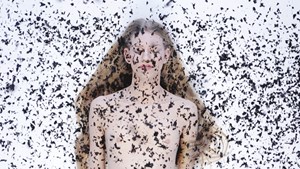
Multimedia artist Nathalie Vanheule incorporates performance, sculpture and video installations into her work. In 2020, she has a series of exhibitions lined up, including a show at the Osan Museum of Contemporary Art in Korea. Curated by Kusuk Yon, the show features 4 contemporary performance artists and allows each artist to build upon the work left behind by the previous exhibitor. Nathalie is set to be the final artist in the series.
Image courtesy to Nathalie Vanheule
Multimedia artist Nathalie Vanheule incorporates performance, sculpture and video installations into her work. In 2020, she has a series of exhibitions lined up, including a show at the Osan Museum of Contemporary Art in Korea. Curated by Kusuk Yon, the show features 4 contemporary performance artists and allows each artist to build upon the work left behind by the previous exhibitor. Nathalie is set to be the final artist in the series.
“The clay I use in my installation comes from a performance by the Korean artist Dailae Bae. I reshaped and deconstructed it. For my installation I added human fake eyelashes that can be found among the cracks of the single blocks of clay. Eyelashes mean happiness and female power. Opening eyes, reflecting, seeing, closing eyes means fantasy, dreaming, and dying. When you close your eyes, you can be anywhere. I was inspired by the landscape of South Korea with its islands and mountains and horizon when I made this directly on the walls of the museum. I wanted to play with the illusion of charcoal drawings. The use of eyelashes is a question about beauty, how far can we go with this. Long full eyelashes are ideal for beauty because they recall youth and innocence, but in extreme forms also seduction and the transsexual.” For now, the corona virus has halted the exhibition.
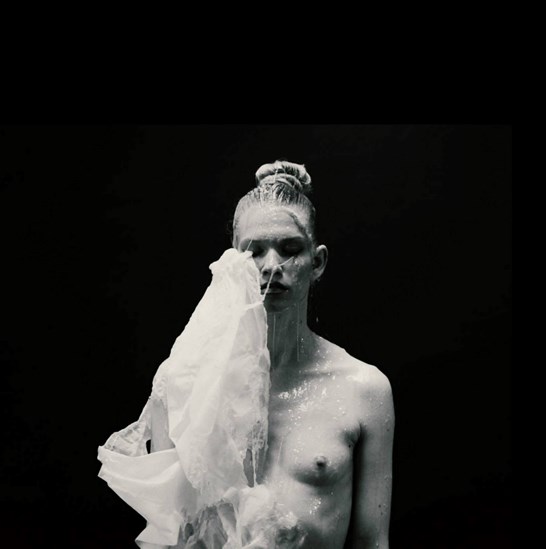
Image courtesy to Nathalie Vanheule
“The day I arrived in Korea,” says Nathalie, “the government decided that all of the museums and Universities must close. I met Kusuk Yon 11 years ago when I had a studio in Paris and we started thinking about this show. Two years ago we began to put together the details.” Vanheule’s installation for the exhibit incorporates clay, water, fire and ashes. “It also includes four of my videos, one picture, three installations and two performances realised to fill a whole level of the museum.” The exhibition is titled WOMAN WOMAN WOMAN WOMAN. “It’s so refreshing as there is an exchange and interaction between the four female artists, nothing is fixed.”
As part of the show, Vanheule was preparing a performance with twenty Korean actors. This physical contact was quickly called into question in the light of corona, and was reduced down to two actors, before the show was postponed. In the two-actor version of a New Embrace, “two performers in a large tongue-like veil of twelve meters burn themselves away in an embrace. The fabric of the long veil is similar to the fabric of a wedding dress, but a closer look reveals that the holes are burnt. The performers are two women who hug each other in a costume designed by Lenny Leleu that can only be worn by two people. The identity fades. Embrace and human contact, helping each other and letting go of the ego is the answer we should start from. The hug burns the veil away.”
Vanheule was also planning to include a photograph of her work Milk Medusa. The photograph is taken by Louise Mae during a rehearsal. “It is about beauty and envy, but also about metamorphosis and transition within a person. In the photo we see my actress, Odessa Lissia, with a penetrating look and a huge tangle of rope and hair covering her face and head. Rope is used as a symbol of solidarity, but also captivity, rope that takes the place of snakes on the head of Medusa. The blonde hair is a self-portrait. Loose hair has only been allowed in the West since the sexual revolution. It means power, seduction and freedom. These elements, rope and hair, can be found in the sculpture I show in the Osan Museum of Art. A sculpture that only finds its full meaning with people - visitors or performers who can be in the sculpture.”
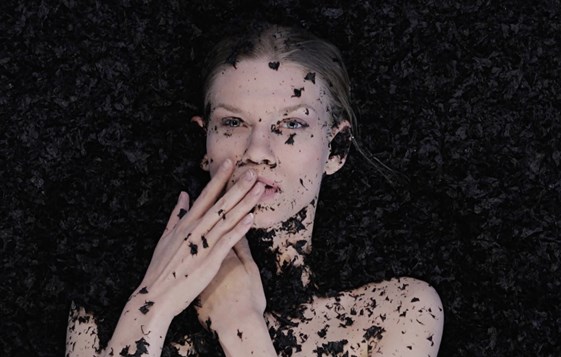
Image courtesy to Louise Mae and Nathalie Vanheule
I wonder how Vanheule chooses her materials. “I work with deconstruction, transition, multi-layering and the natural elements such as wind, water and fire in my artwork. Fire is destruction and new energy. Ashes are a remnant of fire and symbolize transition. They are used as a technique in agriculture to make soil fertile again. At the moment we feel a major transition with the health crisis due to the corona virus. Ashes indicate a change and transition, both in the mind, the different phases in life and in society.”
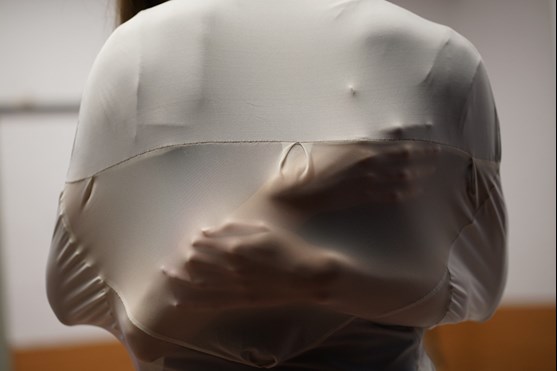
Image courtesy to Nathalie Vanheule
In the Osan expo, Vanheule has also installed two video works – Abstract andThe Color of Water and Tears. “We see a naked ballerina and a large created stone painted with charcoal from which the silhouette of the woman slowly emerges. The woman has a veil of water-soluble material over her head and body. She seems to cover and dissolve in abstract which has a kind of cloth bag over her head and body. We associate the shape with veils. The veil is very important and means happiness, but also hiding beauty. The substance is dissolved by drops of water. The character in the video stays with her eyes closed because once the naked body is slowly visible, it slowly covers itself again in an incessant alternation of showing and hiding, every time you think you capture the image, it glides away . In the background we hear my own breath and the sound of parrots, the symbol of spiritual freedom that we also find in the Ghent Altarpiece by Van Eyck.”
For Nathalie, the corona pandemic has provided a chance to reflect on her work. “My work is like the opposite of corona. Human contact is a very important element.” And when I ask whether Nathalie believes that art has a role to play at this moment in history, she says yes. “People need more than food. Art gives realness and it gives us a way to reflect. Art can tell us things that cannot be spoken in words. Art can open our emotions and consciousness. It melts the frozen sea of our emotions to show us some elements of the truth – the truth that lives inside us.”
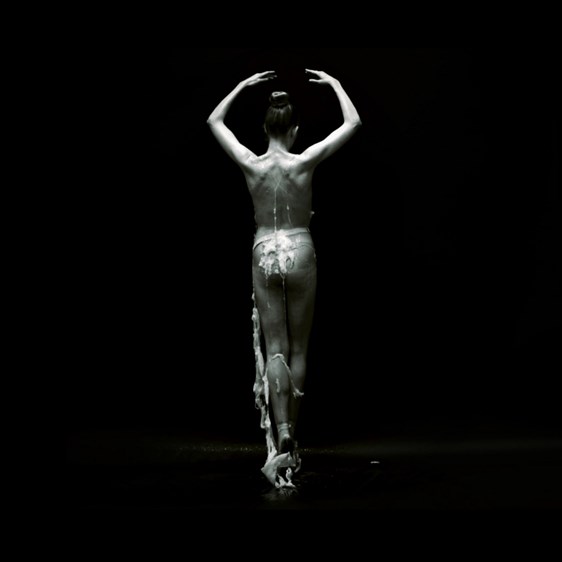
Image courtesy to Nathalie Vanheule
“When you become an artist, you choose a path that is quite insecure. It is not directly about earning money. Sometimes even now I wonder if I should have been a Doctor. But art is important, and it is also a fight. I believe that making art is about transporting your emotion through the body and onto the canvas somehow. I really believe that the work can catch an emotion and keep it there, for the viewers to experience.”
One of Vanheule’s best-known performance works, Ticket to Paradise, invites the viewer to think about what it is that makes them happy. “You can always see a moment of happiness somehow.” During the performance, each participant received a ticket to paradise with a black and white date on it. Each ticket is different. “I like to work with fate,” says Vanheule. After the performance, she received several emails telling her that in the moment she had handed over the ticket and held the participants hand, they had felt something happen. “I really believe that you can give people an energy and an emotion through performance.”
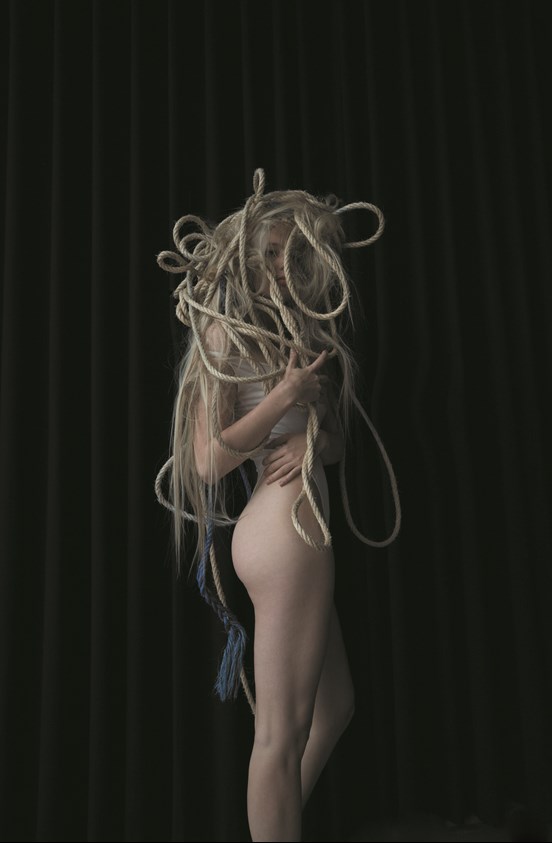
Image courtesy to Louise Mae and Nathalie Vanheule
“Every work includes a self-portrait somewhere, says Picasso, whether you are painting an apple or a person. It is your hand and it is your reflections. But I always want to keep a certain distance between my own reality and the artwork. It should not be purely autobiographical. A work must be able to be read and felt by different people, so that it also becomes their story.”
Vanheule grew up in Ypres on the border of Belgium and France, a city most often known for it’s haunting role in the First World War when it became a front line between rival forces. It is thought that around 300,000 soldiers lost their lives in the region, leaving the city with a sombre atmosphere that remains to this day.
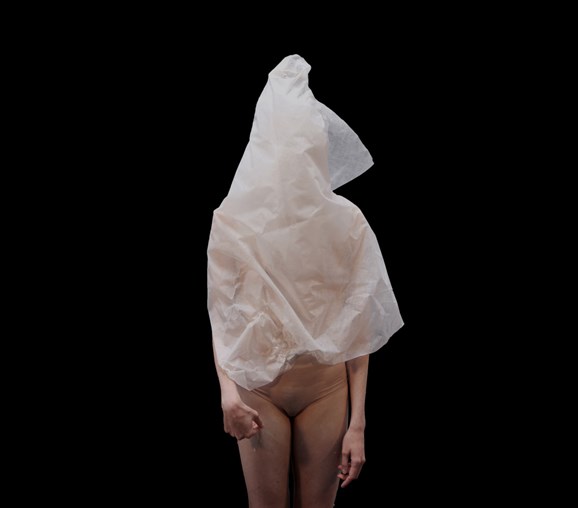
Image courtesy to Nathalie Vanheule
“I have never felt Belgian,” she says, “but European. Belgium is a very young country. I like our Belgian products, our history, architecture, design and art .. I find the ugliness of some of our houses and streets fascinating. It is never predictable or boring. The Flemish painters and Jan Van Eyck left a big mark on me. I also refer to him in my video Burning Eyesby using the sound of parrots as a symbol for spiritual liberation.”
Much has been made out of the connection between Ypres’ dark past and Vanheule’s atmospheric style of work. “I was born in Poperinge and grew up in Ypres between the English cemeteries,” Vanheule says. “My family consists of engineers, farmers, entrepreneurs and pharmacists. I felt more fragile and sensitive than the other children. My way to deal with this sensitivity and fragility was drawing and being creative, when reality was too hard and too dark in my youth. I got high marks, studied mathematics at a girls’ school, had sweethearts and was a model for a while, but I felt alone physically and mentally. It was sometimes like surviving in a sea of feelings.”
And Vanheule acknowledges that perhaps Ypres did leave an imprint on her psyche. “Ypres sharpens the presence of death and loss through its landscape of craters and monuments. My childhood was colored by grandparents' war stories, brown war letters in a cookie jar and a mysterious hidden sword between the bricks of my grandmother's farm.”
“I inhaled the symbolism of Ypres. The city carries a history of death and war. The first fiery kisses with my love took place here in one of the English or Canadian cemeteries. Love and death go together beautifully.”
Death was something that pervaded her thoughts. “As a child, I was convinced that I would die when I reached the age of eighteen. I didn’t die, but my mother died a few weeks before my eighteenth birthday, and my personality died along with it. All my building blocks fell apart. I had to rebuild myself from scratch. You can find this grief and loss throughout my work. My mother's passing changed me and made me determined to embrace the present, to believe in what you do or want to achieve in life. I can still feel my Mother’s love.”
“Death, the end of striving, is something that catches up to us and that we can never prepare for. It is like a shadow. It is always there, but we do not dwell on it. Until the light shines so brightly in our eyes and dark shapes take over our vision.”
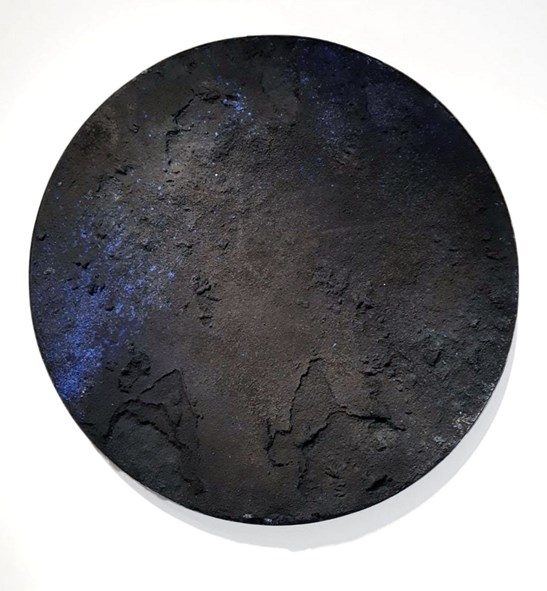
Image courtesy to Nathalie Vanheule
For Vanheule, there is a sense of power of being vulnerable and fragile.“My personality and authenticity are very intertwined in my work. I distill and process into a layering in visual language. I find authenticity and willfulness important when creating a work. During the creation process I isolate myself and I am sensitive and fragile. Fragility and transition in emotions are very important. While creating, as an artist we allow images and ideas, and we must allow that there is also a failure or a throwaway of an idea and design. Allowing failure, emotions and vulnerability is essential to achieve a powerful work.”
“There is fear. Fear is woven into our society and into our human being, which strives for success and perfection. Fear is not an end and not a beginning. The starting point is somewhere in the middle. I have fear and desires, fear of mental loneliness, not being free, fear of death. Topics that come back in my work are the isolated individual, deconstruction, congealed materiality of loneliness. The desire for mental connection and unity or the desire for freedom are recurring themes in my work and my life. The scars have given me at least one special drive, an urge. It will also have to do with sensitivity: artists have a great sensitivity. The creation process is necessary to channel this sensitivity, but also to be stable and happy.”
As Nathale speaks, I sense that she somehow feels that she was born an artist. I ask her when it was that she first thought of herself as an artist. “How does someone become an artist? How does someone choose art as their profession? How do you accept that you are an artist, and that this is your breath, regardless of what is expected? Accepting yourself as an artist is a struggle that you make, it is a form and acceptance, there is no doubt. There is no yes or no as an answer. There is art.”
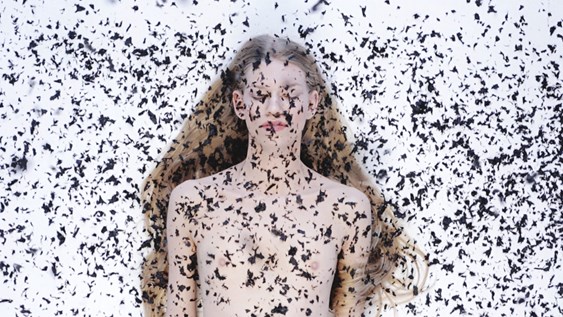
Image courtesy to Louise Mae and Nathalie Vanheule
Vanheule has always been fascinated by the idea of what it is that drives artists to create. “When I was in my twenties I wrote a thesis about the urge to make art - kunstdrang. I did interviews with twenty-four artists and I asked them questions based on my readings of Freud and other texts in psychoanalysis. What I was really doing with that thesis was learning to accept myself and the urge I feel to make art.”
And whose work does Nathalie Vanheuele admire at the moment? “Ann Veronica Janssens, Anne-Mie Van Kerckhoven, Marina Abramovic, Marguerite Humeau, Olga Mikh Federova, Laure Prouvost, Olafur Eliasson and Alicja Kwade. Anne-Mie Van Kerckhoven was my teacher at the KASK in Ghent. She saw me and immediately understood my work. She is a fantastic and important artist for Belgium.’
I ask Vanheule what her life looks like in these days of corona lockdown. “I have my partner and my kids with me. Tonight, I will dance with my friend from Denmark on a video party. We have to use this new technology. We were slightly afraid of it but now we have to use it, there is no other choice. It is good to hear a voice, I need the human part of contact so I am getting whatever I can get. In these times we have to memorise the hugs and live from those memories. We have to memorise that we laughed and smiled and looked into each other’s eyes until we can do it again.”

ArtDependence Magazine is an international magazine covering all spheres of contemporary art, as well as modern and classical art.
ArtDependence features the latest art news, highlighting interviews with today’s most influential artists, galleries, curators, collectors, fair directors and individuals at the axis of the arts.
The magazine also covers series of articles and reviews on critical art events, new publications and other foremost happenings in the art world.
If you would like to submit events or editorial content to ArtDependence Magazine, please feel free to reach the magazine via the contact page.